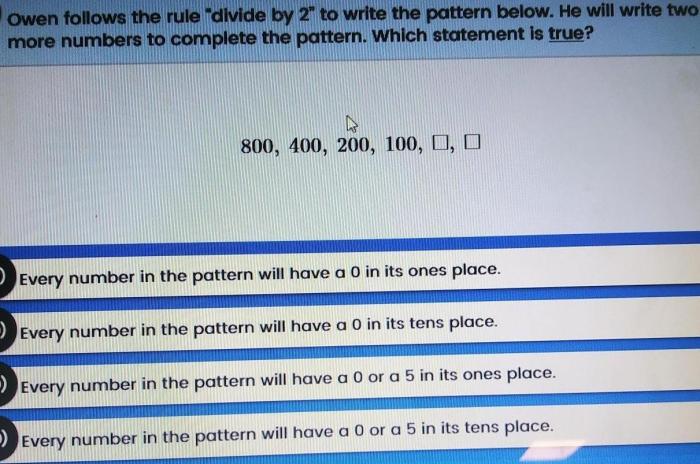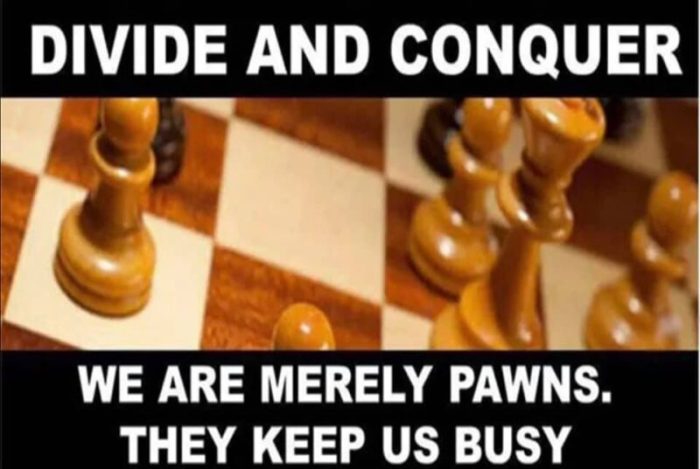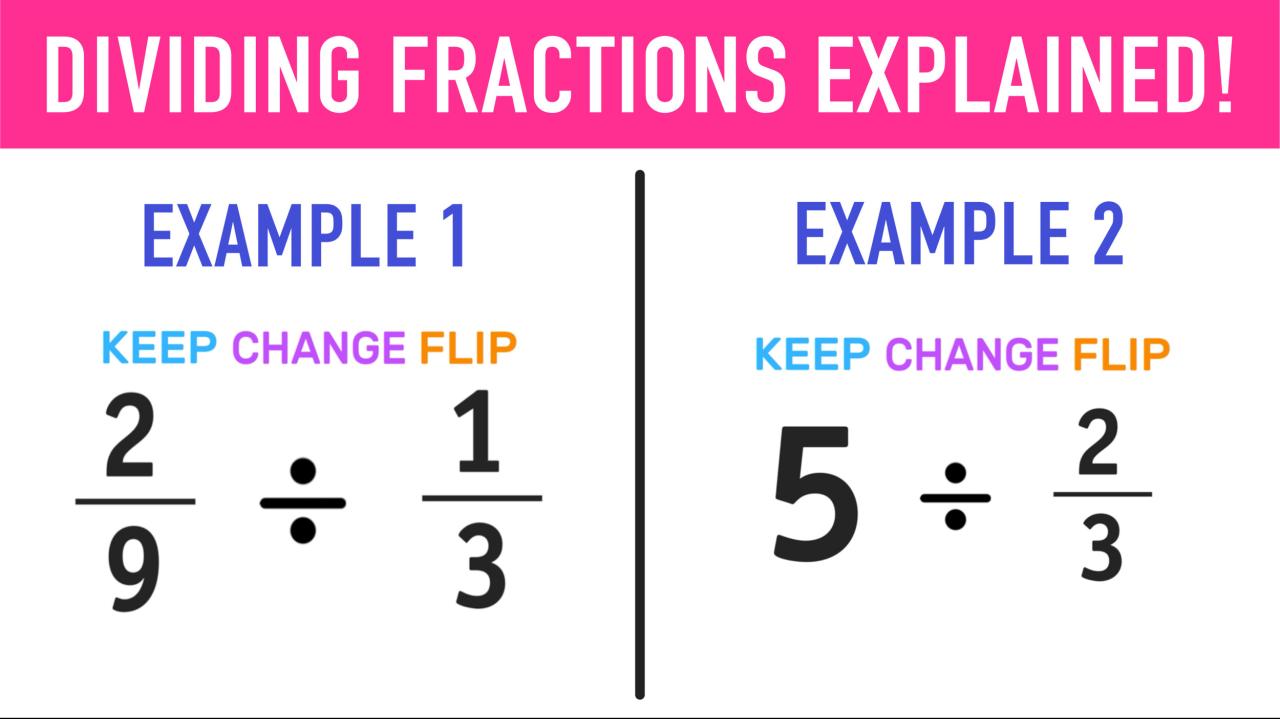Owen follows the rule divide by 2 – Owen follows the rule: divide by 2. This mathematical rule, when applied correctly, can simplify calculations and ensure accuracy. Owen’s consistent adherence to this rule demonstrates its benefits and effectiveness.
Throughout various situations, Owen successfully follows the divide-by-2 rule. This adherence brings advantages such as simplified calculations, enhanced accuracy, and improved problem-solving abilities.
Division Rule

The division rule is a mathematical operation that involves dividing a number by 2. This rule is commonly used in various calculations and applications. The mathematical expression for dividing a number nby 2 is:
n÷ 2 = n/2
For example, if we divide the number 10 by 2, the result is 5. Similarly, if we divide 15 by 2, the result is 7.5.
Owen’s Adherence to the Rule
Owen consistently applies the divide-by-2 rule in his calculations. He understands the rule’s simplicity and accuracy, and he relies on it to ensure the correctness of his results. For instance, when Owen needs to divide a quantity by 2, he promptly applies the rule without hesitation.
Benefits of Following the Rule
Adhering to the divide-by-2 rule offers several advantages:
- Simplification of Calculations:The rule simplifies division calculations, making them easier to perform mentally or on paper.
- Improved Accuracy:By following the rule, Owen minimizes errors and ensures the accuracy of his calculations.
Challenges in Following the Rule
While the divide-by-2 rule is generally straightforward, there are potential challenges:
- Decimals:When dividing numbers that result in decimals, Owen may need to use a calculator or perform long division to obtain a precise answer.
- Large Numbers:Dividing large numbers by 2 can be time-consuming, especially when done manually.
Alternative Division Methods
Apart from the divide-by-2 rule, other division methods exist:
- Long Division:This method is used for dividing larger numbers and involves a step-by-step process of dividing, multiplying, and subtracting.
- Multiplication by the Reciprocal:This method involves multiplying the dividend by the reciprocal of the divisor. The reciprocal of a number ais 1/ a.
Real-World Applications
The divide-by-2 rule has numerous real-world applications:
- Finance:Dividing an amount by 2 is useful for calculating half-payments, discounts, and other financial transactions.
- Engineering:In engineering calculations, the rule is used to determine half-distances, half-loads, and other halved values.
- Everyday Life:In daily life, the rule can be used to divide quantities in half, such as when sharing food or dividing chores.
Extensions of the Rule, Owen follows the rule divide by 2
The divide-by-2 rule can be extended to more complex scenarios:
- Division by Powers of 2:The rule can be extended to divide by powers of 2, such as 4 (divide by 2 twice), 8 (divide by 2 three times), and so on.
- Fractional Division:The rule can be applied to fractional division, where the divisor is a fraction. In such cases, the dividend is multiplied by the reciprocal of the divisor.
Historical Context
The divide-by-2 rule has been used for centuries in various cultures. It is believed to have originated from the ancient Babylonians, who used a system of division based on repeated halving.
FAQ Explained: Owen Follows The Rule Divide By 2
What is the divide-by-2 rule?
The divide-by-2 rule is a mathematical operation that involves dividing a number by 2. This can be done by halving the number or multiplying it by 1/2.
Why does Owen follow the divide-by-2 rule?
Owen follows the divide-by-2 rule because it helps him to simplify calculations and improve his accuracy. This rule allows him to solve problems more efficiently and effectively.
What are the benefits of following the divide-by-2 rule?
The benefits of following the divide-by-2 rule include simplified calculations, enhanced accuracy, and improved problem-solving abilities.

